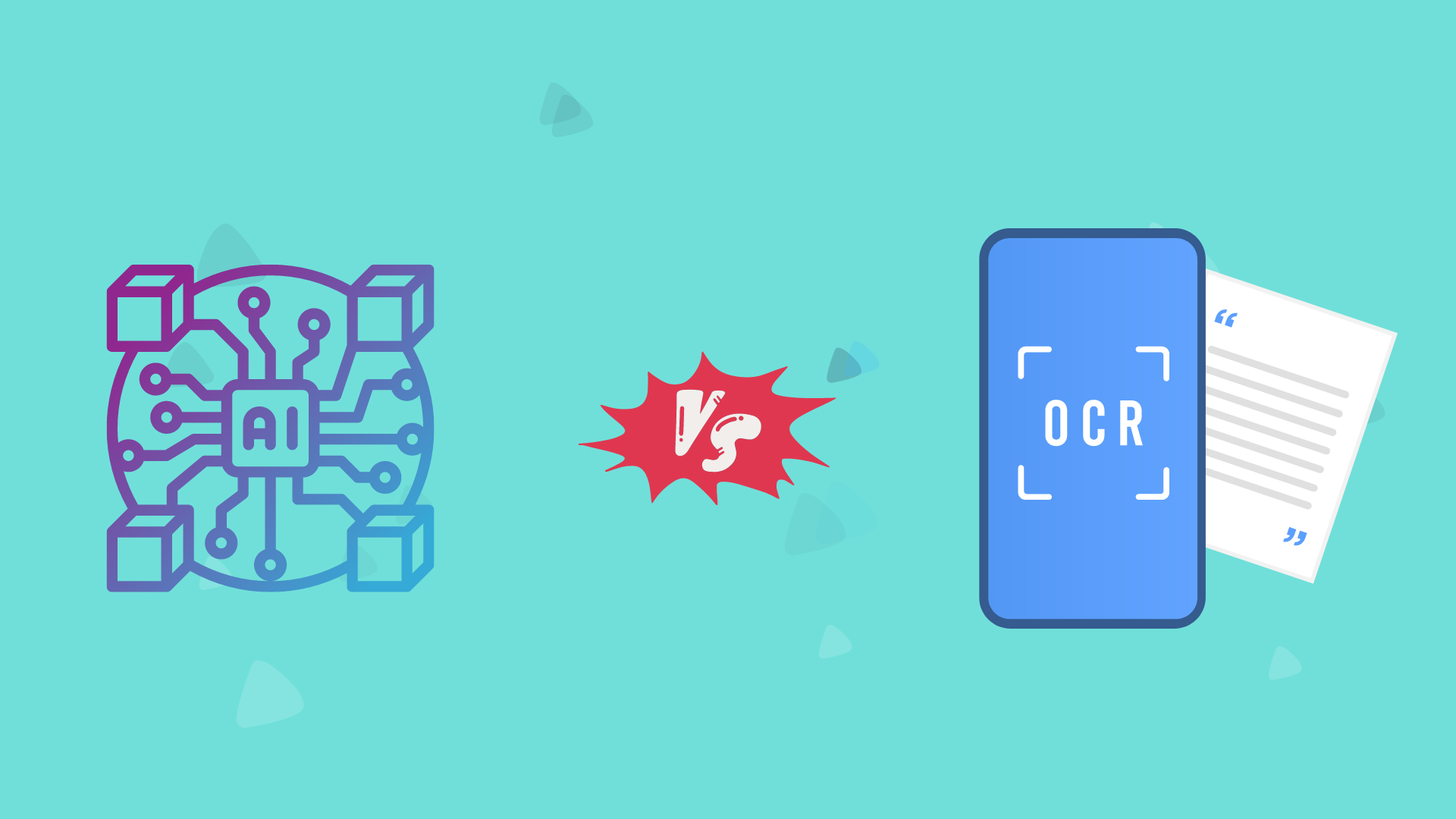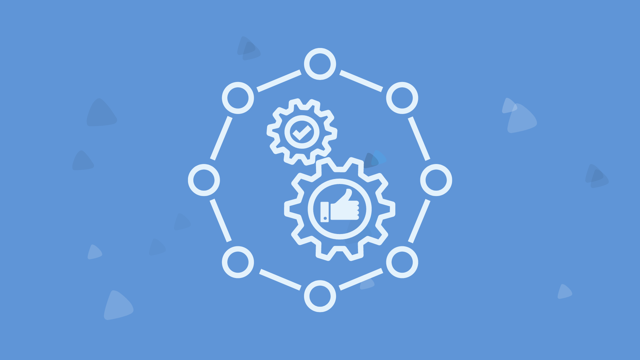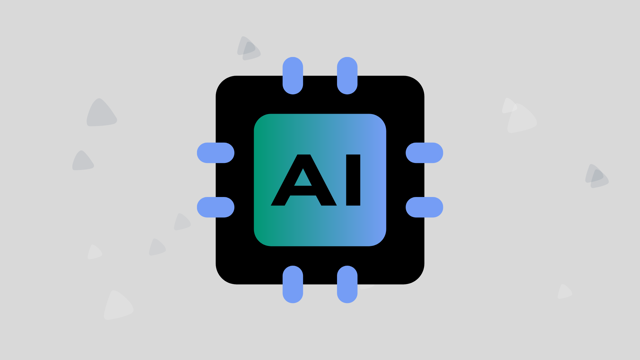AI Vs OCR
2024-06-20
Describes the differences between AI and OCR and how AI can make your business more efficient.
AI vs OCR: Understanding the Differences and Applications
In today’s technologically advanced world, businesses and individuals alike are increasingly turning to automation tools to streamline their processes and enhance efficiency. Two such tools that have gained significant attention are Artificial Intelligence (AI) and Optical Character Recognition (OCR). Although these technologies are often mentioned together, they serve different purposes and have distinct capabilities. This article aims to clarify the differences between AI and OCR, explore their applications, and provide insights into how they can be leveraged for maximum benefit.
What is AI?
Defining Artificial Intelligence
Artificial Intelligence (AI) refers to the simulation of human intelligence in machines. These machines are programmed to think like humans and mimic their actions. AI encompasses a wide range of capabilities, from simple task automation to complex decision-making and problem-solving. The core idea is to enable machines to perform tasks that would typically require human intelligence, such as recognizing speech, learning, planning, and understanding natural language.
Types of AI
There are several types of AI, each with varying levels of complexity and application:
- Narrow AIAlso known as weak AI, this type of AI is designed to perform a specific task. Examples include voice assistants like Siri and Alexa, recommendation systems on streaming services, and chatbots.
- General AIThis type of AI, also known as strong AI or full AI, can understand, learn, and apply knowledge across a wide range of tasks. General AI remains largely theoretical and is a goal for future AI development.
- Super-intelligent AIThis is a level of AI that surpasses human intelligence. It is a hypothetical concept and is the subject of much debate and speculation in the AI community.
How AI Works
AI systems work by processing large amounts of data and recognizing patterns within that data. Machine learning, a subset of AI, involves training algorithms on data sets to improve their accuracy over time. Deep learning, a more advanced form of machine learning, uses neural networks with many layers to analyze various factors of data.
AI’s ability to learn and adapt makes it incredibly powerful for a wide range of applications, from medical diagnosis to autonomous vehicles.
What is OCR?
Defining Optical Character Recognition
Optical Character Recognition (OCR) is a technology that converts different types of documents, such as scanned paper documents, PDFs, or images captured by a digital camera, into editable and searchable data. OCR is used to digitize printed texts so they can be electronically edited, searched, stored more compactly, displayed online, and used in machine processes such as cognitive computing, machine translation, (text-to-speech) TTS, key data, and text mining.
How OCR Works
OCR works by analyzing the structure of a document image. It decomposes the document into its elements, such as text blocks, table structures, image areas, and more. OCR software then processes these elements in three major steps:
- Image PreprocessingThe image is enhanced and cleaned to improve accuracy. This may involve removing noise, correcting distortions, and enhancing contrast.
- Character RecognitionThe software identifies characters in the document image. It does this by comparing shapes in the image to a library of character images. Modern OCR systems use machine learning algorithms to improve accuracy.
- Post-ProcessingThe recognized text is converted into a structured format, such as a searchable PDF or a text file. This step may also include error correction and formatting.
Applications of OCR
OCR has a wide range of applications, including:
- Document DigitizationConverting paper documents into digital formats for easier storage and retrieval.
- Data Entry AutomationAutomating the process of entering data from forms and invoices into databases.
- Text Recognition in ImagesExtracting text from images for various purposes, such as license plate recognition or reading text from signs.
- Assistive TechnologyHelping visually impaired individuals by converting written text into speech.
AI vs OCR: Key Differences
Scope and Capabilities
One of the fundamental differences between AI and OCR is their scope and capabilities. OCR is a specific technology focused on recognizing and digitizing text. Its primary function is to convert images of text into machine-readable text. While OCR can be very accurate, it is typically limited to text recognition tasks.
AI, on the other hand, is a broad field encompassing various technologies and applications, including machine learning, natural language processing (NLP), computer vision, and robotics. AI can perform a wide range of tasks, from image and speech recognition to complex decision-making processes.
Learning and Adaptability
Another key difference is that AI systems can learn and adapt over time. Through machine learning, AI can improve its performance based on the data it processes. For instance, an AI-powered recommendation system can become more accurate as it gathers more user data.
OCR, while it can be enhanced with machine learning techniques to improve accuracy, does not inherently learn or adapt in the same way that broader AI systems do. OCR systems are typically trained on large datasets of text images to improve recognition accuracy but are not designed to continually learn from new data.
Complexity of Tasks
The complexity of tasks that AI and OCR can handle is also a distinguishing factor. OCR is well-suited for tasks that involve reading and digitizing text. It excels in scenarios where the text is relatively straightforward and consistent.
AI, however, can handle much more complex tasks. For example, an AI system can analyze vast amounts of data to detect patterns and make predictions, understand and respond to natural language queries, and even control autonomous vehicles. The versatility and complexity of AI make it applicable to a wider range of industries and use cases.
How Does AI Enhance OCR?
Improving Accuracy
AI can significantly enhance the accuracy of OCR systems. Traditional OCR relies on pattern recognition and can struggle with variations in fonts, handwriting, or poor-quality images. By incorporating machine learning algorithms, AI can help OCR systems better understand and adapt to these variations. For instance, AI-powered OCR can learn to recognize handwriting styles and improve accuracy over time.
Contextual Understanding
AI can also provide contextual understanding that traditional OCR lacks. For example, AI can analyze the surrounding text and make educated guesses about unclear characters or words. This contextual understanding can be particularly useful in documents with complex layouts or mixed content types.
Automated Error Correction
AI can automate error correction in OCR outputs. By leveraging natural language processing (NLP), AI can identify and correct errors in the recognized text. For example, if an OCR system misreads a word, AI can use context and language rules to correct it, enhancing the overall reliability of the digitized text.
Enhanced Document Processing
AI can extend the capabilities of OCR beyond simple text recognition. For instance, AI can classify documents, extract relevant information, and even summarize content. This goes beyond the traditional scope of OCR and provides a more comprehensive solution for document processing.
Applications of AI and OCR in Various Industries
Healthcare
In the healthcare industry, both AI and OCR play critical roles. OCR is used to digitize patient records, prescriptions, and medical forms, making it easier to store and retrieve information. This reduces the reliance on paper records and enhances data accessibility.
AI takes this a step further by analyzing patient data to identify patterns and provide insights. For example, AI can predict patient outcomes, suggest personalized treatment plans, and even assist in diagnostic processes by analyzing medical images. The combination of AI and OCR ensures that healthcare providers have access to accurate and comprehensive patient information, improving the quality of care.
Finance
In the finance sector, OCR is used to automate data entry from invoices, receipts, and other financial documents. This reduces the time and effort required for manual data entry and minimizes errors. OCR can also help in processing checks and other banking documents, speeding up transaction times.
AI enhances these capabilities by providing predictive analytics, fraud detection, and risk assessment. AI can analyze financial data to identify trends, detect anomalies, and make informed decisions. This helps financial institutions improve efficiency, reduce fraud, and make better investment choices.
Retail
Retailers use OCR to process receipts, invoices, and other documents related to inventory management and customer transactions. This ensures accurate record-keeping and efficient inventory tracking.
AI enhances the retail experience by providing personalized recommendations, optimizing supply chain management, and predicting customer behavior. AI-powered chatbots can also assist customers in real-time, improving customer service and engagement.
Legal
In the legal industry, OCR is used to digitize legal documents, making it easier to search and retrieve information. This reduces the time spent on manual document review and improves efficiency.
AI can further enhance legal processes by analyzing large volumes of legal texts to identify relevant information, predict case outcomes, and assist in legal research. AI-powered tools can also automate contract analysis and management, reducing the workload for legal professionals.
Education
Educational institutions use OCR to digitize textbooks, exam papers, and other educational materials. This makes it easier to store, search, and distribute information.
AI enhances the learning experience by providing personalized learning paths, automated grading, and intelligent tutoring systems. AI can analyze student performance data to provide insights and recommendations for improving educational outcomes.
Frequently Asked Questions (FAQs)
Conclusion
AI and OCR are powerful technologies that offer distinct yet complementary benefits. While OCR excels in text recognition and digitization, AI brings a broader range of capabilities, including machine learning, natural language processing, and decision-making. By combining these technologies, businesses can significantly enhance their efficiency, accuracy, and overall performance across various industries. Whether you are looking to streamline document processing, improve data accuracy, or leverage advanced analytics, understanding and utilizing both AI and OCR can provide a competitive edge in today's digital landscape. Embrace the future of automation and innovation by integrating AI and OCR into your operations.
Más artículos que podrían interesarte
Digitalización de facturas: Más allá del papel, hacia la eficiencia total - Dost
Digitalización de facturas: optimiza procesos, reduce errores y mejora la eficiencia total de tu empresa. Descubre cómo ir más allá del papel hacia la transformación digital.
2024-07-31 • Eric Alcantud | Marketing @ Dost AI
Subvencionado por el CDTI
Soluciones
Iniciar sesión






